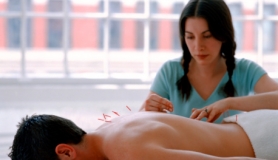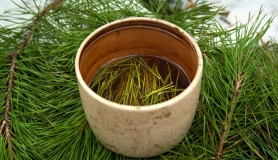Get out and about to find tiny frogs, newts and other watery mini-beasts. You can even keep your own luscious, wobbly eggs and watch them hatch. We spoke to Sylvia Myers, Senior Site and Projects Officer at London’s Centre for Wildlife Gardening
“Children are always drawn to the water – maybe it is instinctive since we need water to live and we evolved from water animals. Through pond-dipping, children learn about life-cycles, food chains, adaption, empathy for other creatures, managing risks around water and they gain a sense of wonder about nature.
Look up your local nature reserve. London Wildlife Trust has several where we run pond dipping sessions throughout the year – The Centre for Wildlife Gardening, Camley Street Natural Park, Woodberry Wetlands and Gunnersbury Triangle are great places to go. You’ll find something to see any time from the end of February to the end of October. So much lives in ponds – far more than just frogs! Try and find a place to pond dip regularly and see how the wildlife changes over the year.
You should always have permission from whoever owns the pond. The owner may let you dip yourself or may request that you wait for an organised session with an expert on hand. Some ponds have species such as great crested newts which are protected by law, that only specially trained people can handle.
You don’t have to have any special equipment – you can often see a lot just observing what is on the water. This also gets around permission problems – not many places will mind you looking in a pond. To dip properly, however you will need a net and a white tray, and a magnifier and an ID sheet are also useful. It’s best to borrow dipping equipment from the place you are pond dipping – sadly there are lots of diseases that are killing our pond life and they can be spread on equipment.
Start by looking at anything that moves (and some things that don’t)! Male newts dance to impress their mates, then the females wrap each egg they lay individually in leaves with their back legs. Caddis fly larvae make tubes to hide their bodies from whatever makes up their pond - reeds, twigs, leaves - someone even persuaded them to use gems and flakes of gold. Water scorpions breathe through a tube that sticks out their rear end, and water spiders breathe from a bubble of air trapped in an underwater web. I love ponds and whenever I find one I will be on my belly on the bank trying to spot things. Finding my first newt egg was really amazing - you really need to tune in and know what to look for so it felt like discovering a secret.
If you have a pond in your garden (or have a friendly neighbour with a pond) bringing up frogs inside is fine. Scoop up the spawn and put it in a tank with some pond water (not tap water) and a few bits of pond weed. You can feed the tadpoles on goldfish food. Release them back where you found the spawn when they have legs. If you or a neighbour don’t have a pond build a small pond in your garden – frogs will happily lay eggs in almost any body of water. You don’t need to dig – a barrel or an old bath will do.”







